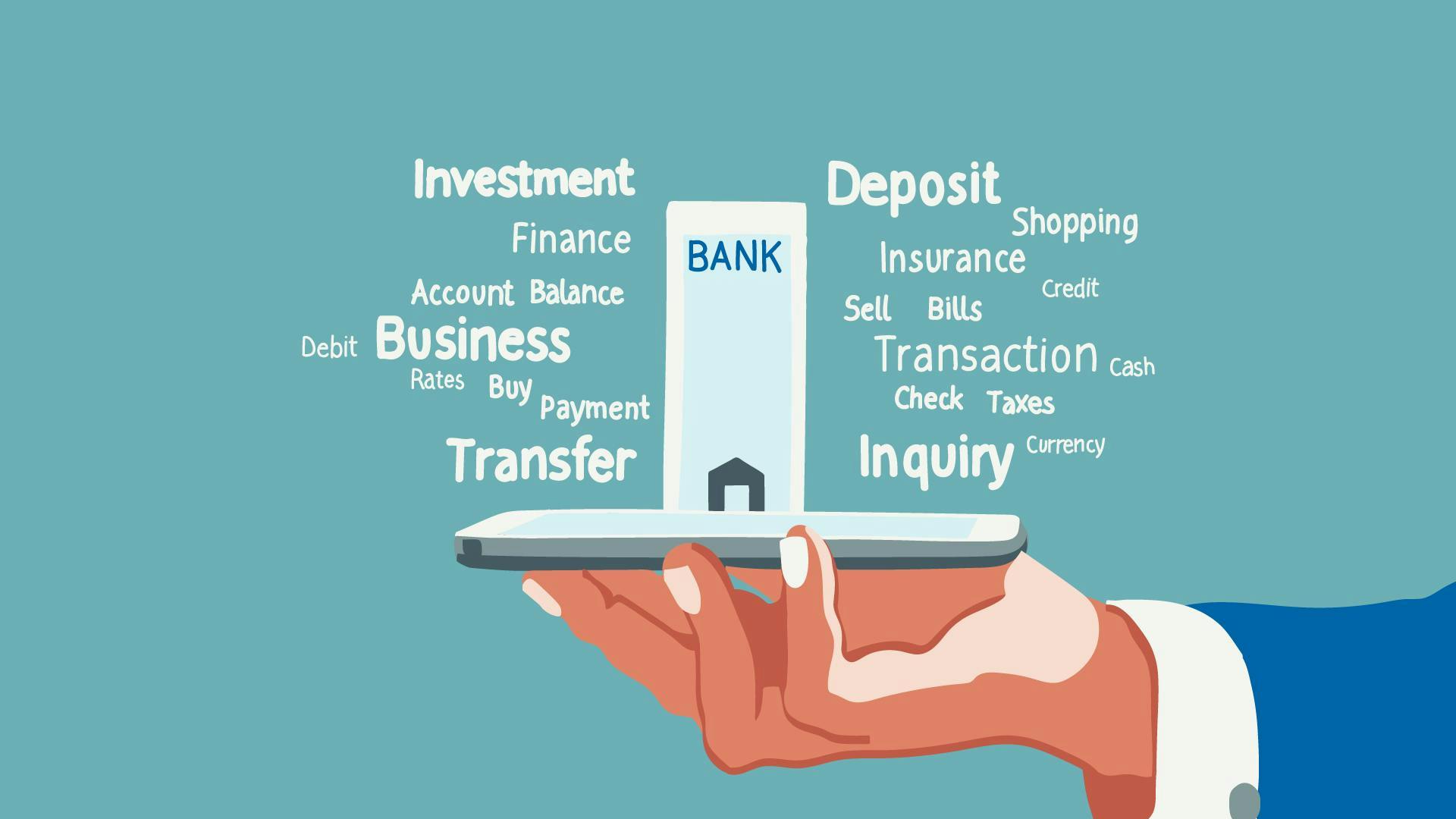MAIN - Blog Banking - "Finanzen managen für Selbstständige - wie Mobile Banking dir helfen kann"
Zuletzt aktualisiert am 4. Juli 2023
Janna Kersting
Chief Editor
22. März 2019
Seit einigen Jahren rollt ein Trend über den Finanzsektor: Mobiles Banking, d.h. das Erledigen von Bankgeschäften per App und Tablet. In der Altersgruppe der 25- bis 34-Jährigen nutzt bereits über ein Drittel der Deutschen Apps, mit denen Sie ihr Finanzen auf Mobilgeräten verwalten können.
Dahinter steht mehr als nur das Bedürfnis, jederzeit und überall Zugriff auf das eigene Konto zu haben... Mobile Banking-Apps sind nämlich mehr als nur eine Smartphone-Version des Online-Bankings. Die besten Anbieter sind hochinnovative Technologieunternehmen, die euch das Leben mit smarten Algorithmen deutlich leichter machen wollen
Das und die enorme Flexibilität des Mobile Bankings sorgen dafür, dass es enorme Vorteile für Leute mit einem aktiven und flexiblen Lebensstil bietet… Wie beispielsweise Selbstständige! Im folgenden Beitrag erfährst du, wie Mobile Banking dir dabei helfen kann, dein Leben und deine Finanzen effektiv im Griff zu behalten.
Die Vorteile des Mobile Bankings für Freelancer
Behalte deine Ausgaben im Griff
Seien wir ehrlich: Wenn du dich selbstständig machst, gibst du einen bedeutenden Teil deiner finanziellen Sicherheit auf. Für ein hohes Maß an Freiheit verzichtest du auf ein festes Einkommen, mit dem du rechnen kannst. Außerdem fehlt dir die Unterstützung eines Arbeitgebers, der dir im Krankheitsfall dein Gehalt zahlt.
Für Freelancer und Gründer gilt gleichermaßen: Du musst ein Finanzpolster für magere Zeiten und unerwartete Ausgaben aufbauen!
Doch das ist leichter gesagt als getan - bis du dir einen Ruf aufgebaut hast, wird dich niemand mit Geld überschütten. Und das braucht Zeit. Du solltest mit einer Durststrecke von ein bis drei Jahren rechnen, bis du dich etabliert hast.
Praktisch gesehen heißt das: Du musst diszipliniert haushalten und sparen! Wenn du deine Ausgaben nicht im Griff hast, kannst du schnell in Existenznot kommen.
Gute Mobile Banking-Apps können extrem hilfreich dabei sein. Idealerweise bieten sie neben einem schnellen Zugriff auf deinen Kontostand die Möglichkeit, deine Ausgaben ganz einfach zu kategorisieren und zusammenzurechnen.
Dieses Feature solltest du unbedingt nutzen - Du wirst überrascht sein, wieviel du für Restaurantbesuche, Kaffee und all den kleinen Luxus ausgibst, den man sich “mal gönnt”.

Aber keine Sorge - sobald du diese Ausgaben im Blick behältst, hast du schon halb gewonnen.
Mach deine Steuerrücklagen… SOFORT!
Eine Sache darfst du nie vergessen: Das Geld, das auf deinem Konto ankommt, ist nicht alles deins.
Je nach Rechtsform deiner Unternehmung zahlst du zwei oder drei Arten von Steuern: die Umsatzsteuer, die Einkommenssteuer und die Gewerbesteuer (von der Freelancer gottseidank befreit sind). Drei massive Ausgaben in deiner Bilanz, die du unbedingt einplanen musst.
Nun, wenn das nur so einfach wäre… Vom Finanzamt erfährt man erst nach 3 (qualvollen!) Steuererklärungen konkret, wie hoch die Vor- und Nachzahlungen sind, die man leisten muss.
Trotzdem darfst du dieses Thema auf keinen Fall beiseite schieben! Es geht um hohe Beträge, die dir schnell das Genick brechen können, wenn sie unerwartet kommen.
Glücklicherweise gibt es Mobile Banking-Apps, die für dich in die Bresche springen.
Beobachte offene Rechnungen nebenher
Eine der unangenehmsten Lektionen für Selbstständige ist, dass das Geld für deine Dienstleistungen nicht automatisch auf deinem Konto landet. Zu deinem administrativen Workload gehört auch, verschlafene Buchhaltungen anstupsen und mit schriftlichen Zahlungsaufforderungen zu traktieren, wenn das nicht hilft.
Gerade als freiberuflicher Einzelkämpfer stehst du hier vor einem Dilemma: Du hast wenig Zeit und tausend andere Probleme, die nach deiner Aufmerksamkeit schreien… Und trotzdem musst du bei deinen Zahlungsforderungen aktiv am Ball bleiben, wenn du nicht unerwartet auf dem Trockenen sitzen willst.
Das schöne am Mobile Banking ist, dass du deinen Kontostand von überall aus und in Echtzeit im Blick behalten kannst. Das erlaubt es dir, deine offenen Rechnungen immer dann zu checken, wenn du Luft hast.
Geh im Bus zum nächsten Termin deine neuesten Einnahmen durch und schick schnell eine Erinnerungsmail raus, bevor du beim nächsten Termin ankommst… Oder freu dich über eine Echtzeit-Notification, wenn dein überfälliges Geld endlich angekommen ist und du aufatmen kannst.
Spare wertvolle Zeit
Lebenszeit ist immer kostbar, aber Selbstständige müssen mit Ihr noch viel bewusster umgehen als Angestellte.
Zeit ist das wichtigste Kapital, dass du in dein Unternehmen investieren kannst - immer extrem gefragt und immer furchtbar knapp.
Falls du am Anfang deiner Selbstständigen-Karriere stehst, wirst du noch weniger davon haben. Du musst lernen, dich komplett selbst zu organisieren, und das wird nicht von heute auf morgen passieren.
Dir droht ständig die Gefahr, zu viel Zeit mit administrativen Aufgaben zu verschwenden… Nicht zuletzt deshalb, weil - seien wir ehrlich - Sie auch eine entspannende Ablenkung von unangenehmen Themen wie der Kundenakquise sind. Das mag angenehm sein, aber das Problem ist: So kommst du leider nicht weiter.

Mobile Banking-Apps helfen dir dabei, deine Finanzen möglichst schnell im Blick zu behalten und den langwierigen Weg zur Filiale zu vermeiden. Viele der vorhandenen Apps bieten nämlich die Möglichkeit, die wichtigsten Service-Funktionen deiner Bank in Anspruch zu nehmen, ohne persönlich vorstellig werden zu müssen.
Ziemlich praktisch… Insbesondere wenn man bedenkt, wie lange der letzte Bankberatungstermin mit An- und Abfahrt gedauert hat. Investiere deine Zeit lieber darin, ein Paar Akquiseanrufe mehr zu machen, etwas Neues zu lernen oder deine Projekte richtig gut zu machen!
Erledige deine Bankgeschäfte von überall
Café, Park oder Coworking-Space - als Selbstständiger hast du immer die Qual der Wahl, von wo du arbeiten willst. Für viele bedeutet dass nicht nur Freiheit, sondern auch Notwendigkeit - als Einzelkämpfer wirst du wahnsinnig, wenn du deine Tage allein in deinem kleinen Arbeitszimmer verbringst. Du solltest regelmäßig dein Lager dort aufschlagen, wo andere sind, mit denen du dich austauschen kannst.
Mobile Banking-Apps kommen dir hier entgegen, weil du nicht einmal mehr auf einen Laptop oder W-Lan angewiesen bist, um deine Bankgeschäfte zu erledigen. Die Sonne strahlt fröhlich zum Fenster herein? Pack deine offenen Rechnungen ein, setz dich 30 Minuten in den Park und bezahl sie auf deinem Smartphone!
Die Zukunft: Warum Mobile Banking immer spannender wird
Bist du schon überzeugt? Ja, Mobile Banking bietet eine ganze Menge Vorteile, die es für Freiberufler spannend machen… Aber das ist erst der Anfang! In den nächsten Jahren wird sich extrem viel mehr auf diesem Gebiet bewegen, so dass Banking bald nicht wiederzuerkennen sein wird.
Mittlerweile fließt enorm viel Geld in die Digitalisierung der Finanzbranche und mutige junge Unternehmen arbeiten mit Hochdruck daran, eine komplett neue Banking-Erfahrung für das digitale Zeitalter zu erfinden.
Ich spreche hier nicht von einer Entwicklung über die nächsten 20 Jahre. Schon heute werden viele Technologien, die große Umbrüche bringen werden, in den Startlöchern - Sie müssen nur noch auf den Markt gebracht werden.
Hier also ein kurzer Überblick darüber, womit du in den nächsten Jahren rechnen kannst:
Viel mehr Sicherheit
Für viele gibt es einen Hauptgrund, warum sie Mobile Banking nicht nutzen: Sicherheitsbedenken. Was, wenn das eigene Smartphone gehackt oder gar gestohlen wird?
Diese Bedenken sind nicht unbegründet, doch arbeiten viele Unternehmen daran, sie obsolet zu machen.
Ein Schlüssel zum Schutz deines Kontos, den viele Anbieter verfolgen, ist die Nutzung deiner biometrischen Daten für Autorisierungsvorgänge. Das heißt: Statt einem Passwort - das leicht gestohlen werden kann - dienen deine unverwechselbaren körperlichen Eigenschaften als deine Erkennungsmerkmale für die Konto-App.
Das ist keine Zukunftsmusik, sondern schon seit 2013 Realität, als mit dem iPhone 5S ein Fingerabdrucksensor (Touch-ID) eingeführt wurde. Auch eine Technologie, die eine Autorisierung von Zahlungen per Selfie oder Stimmerkennung möglich macht, gibt es bereits.
Letzten Endes wird Mobile Banking also bald sicherer als Online-Banking am Rechner und der gute, alte Bankautomat sein - schließlich ist es auch kein Hexenwerk, deine Karte zu stehlen und deine Passwörter auszuspähen!
Personalisierte Finanzangebote
Gerade für Selbstständige sieht es oft so aus, als ob klassische Bankberater keine Augen im Kopf haben. Ein Kredit soll zu riskant sein, obwohl das eigene Konto sich seit Jahren so zuverlässig mit Geld füllt wie das eines Angestellten?
Diese Zeiten werden gottseidank bald vorbei sein. Mobile Banking- Apps haben Zugriff auf verschiedenste Daten von dir und werden bald ziemlich genau verstehen, wie deine finanzielle Situation aussieht.
Das mag etwas furchteinflößend klingen, doch das Gute daran ist: Bald musst du dich nicht mehr mit Bankberatern herumschlagen, die keinerlei Verständnis für deine persönliche Situation haben. Smarte Algorithmen werden deine Verhaltensmuster auswerten und dir ohne Ärger einen Kredit bewilligen, wenn du ihn zurückzahlen kannst.
Auch die Zeiten, in denen du dich durch einen Dschungel von Versicherungen und Anlagemöglichkeiten schlagen musstest, werden bald der Vergangenheit angehören. Apps werden in der Lage sein, ein umfangreiches persönliches Profil von dir zu erstellen und dir die Finanzprodukte vorzuschlagen, die wirklich zu dir passen.
Viel weniger Arbeit für dich
Wäre es nicht schön, wenn dein Konto auch deine Buchhaltung übernehmen und deine Steuererklärung schreiben könnte? Eine gewagte Zukunftsvision, die aber mehr als ein schöner Traum ist. Mittlerweile arbeiten viele Unternehmen an Software, die solche komplexen Aufgaben automatisch übernehmen können.
Ähnliche Artikel
Das Eisenhower-Prinzip - wie man "Wichtig" und "Dringend" priorisiert
Kannst du das Wichtige vom Dringenden unterscheiden? Und was bedeutet das für dein tägliches Arbeiten? Mit dem Eisenhower-Prinzip wird es einfach. Wir geben dir eine Anleitung, mit der du lernen kannst, wie man richtig priorisiert!
Maid Dzambic
Freelance Editor
